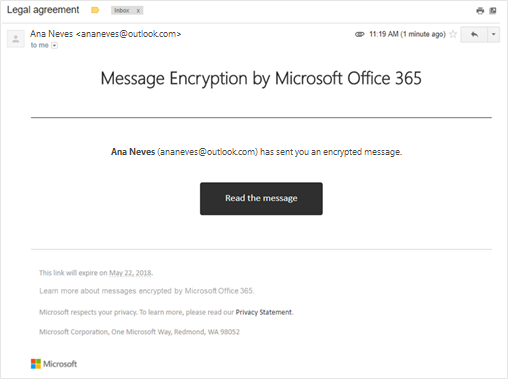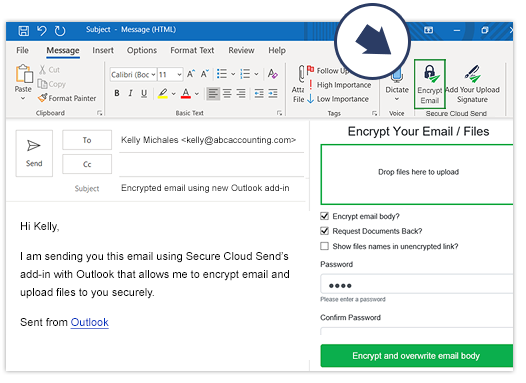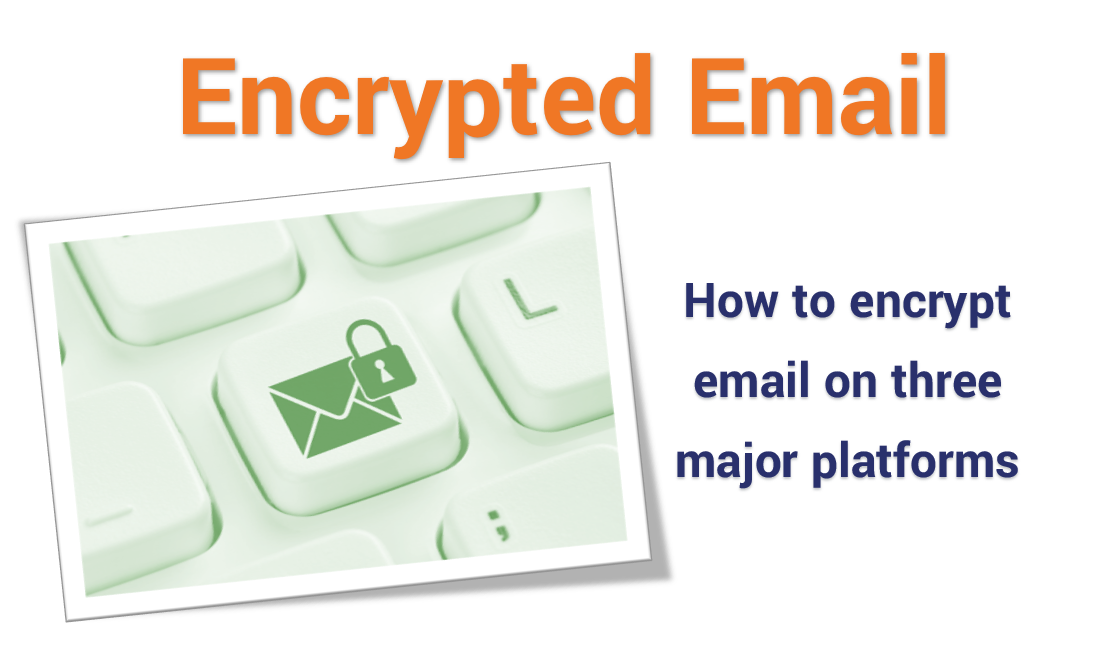

- #Encrypt documents for email password#
- #Encrypt documents for email free#
- #Encrypt documents for email windows#
Step 7: Click on the encryption symbol and enter the password to read the email. Step 6: Launch your webmail client and then open the message sent to you by Mailvelope. You cannot reset the password, so be sure to store it somewhere like a password manager. Step 4: On the following screen, enter your name, email address, and password.

Step 3: Click on the Generate Key button to create your key pair set. Step 2: Click the Mailvelope icon and then click on the red Let’s Start button.
#Encrypt documents for email free#
It supports Chrome, Firefox, and Chromium-based browsers, including the new Microsoft Edge.īefore you use this free service, keep in mind that the recipient must also use Mailvelope to decrypt your messages. For end-to-end encryption, you will need a browser extension. Enter the recipient’s phone number and then click on the Send button.Īs we previously pointed out, webmail clients encrypt the transport only while the email is in transit, not the actual message. Step 8: A pop-up window appears on your screen. If you chose the SMS Passcode option, move on to the next step.

Step 12: Under Encrypted Email, click the Settings button. Your certificate should already be selected for signing and encryption by default. Step 11: Click the OK button displayed in the security dialog box.Īt this point, you return to the Email Security panel in the Trust Center window. Step 10: Enter the password associated with the certificate file and then click OK. Step 9: Find and select the downloaded file. Step 8: Click the Browse button displayed next to Import File. Step 7: Check the box next to Import Existing Digital ID from a File if it’s not already. Step 6: Under Digital IDs (Certificates), click on the Import/Export button. Step 5: Select Email Security listed on the left. Step 4: Click on the Trust Center Settings button displayed on the right. Step 3: On the Outlook Options window, select Trust Center listed on the left. Step 2: Select Options on the next panel. Step 1: With the Outlook desktop client open, click File located in the top left corner.
#Encrypt documents for email windows#
These instructions assume that you already obtained an S/MIME certificate, downloaded the file to your Windows PC, and have the required password handy.


 0 kommentar(er)
0 kommentar(er)
